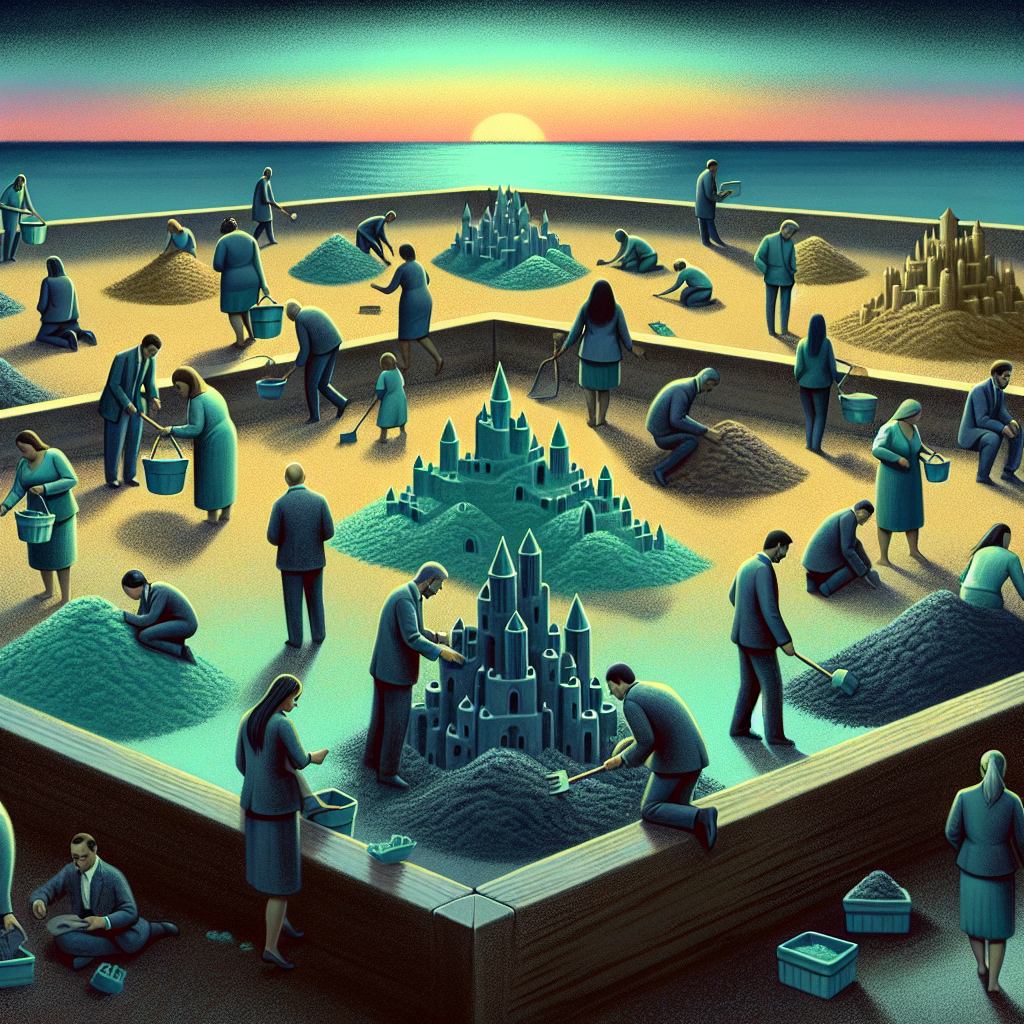Alright, let’s dive into the wild world of economic systems without putting you to sleep. Ever wondered what a liberal market economy is? No worries if you haven’t—most folks haven’t exactly been itching to chat about it over coffee. But stick with me, because understanding this could be your ticket to sounding super smart at your next dinner party (or at least understanding why your boss keeps talking about “market forces”).
So, markets—they’re everywhere. Kind of like that one song you can’t escape on the radio. They’re the beating heart of any capitalist economy, making sure goods and services get from point A to point B. Now, two clever dudes, David Soskice and Peter A. Hall, thought it would be fun to categorize the different flavors of capitalism. They came up with two main types: the Liberal Market Economy (LME) and the Coordinated Market Economy (CME).
If capitalism were a party, LMEs would be the laid-back gatherings where everyone does their own thing, and CMEs would be the meticulously planned events where every detail is coordinated. We’re going to crash the LME party today. Ready? Let’s go!
Curious about how order meets freedom? Check out Ordoliberalism: Definition and Characteristics (promise it’s more exciting than it sounds).
What Is a Liberal Market Economy?
So, what’s the big deal with liberal market economies? Imagine a place where businesses interact with other businesses, suppliers, customers, and employees pretty much however they fancy—within some ground rules set by the government, of course. It’s like a giant sandbox where everyone can build their own castles, but no one’s allowed to throw sand in someone else’s face.

An LME is a type of mixed economy, blending characteristics of both socialist and free market economies. Think of it as the best of both worlds—or at least the most exciting parts. Here, businesses enjoy significant freedoms in how they conduct themselves. It’s all about competition, innovation, and, let’s be honest, a bit of hustle.
How Does a Liberal Market Economy Work?
In a liberal market economy, the name of the game is decentralization. That means businesses and employees negotiate directly at the workplace—no fancy middlemen required. Want a raise? Time to have a chat with your boss over coffee (or maybe something stronger). Trade unions? They’re around, but companies often keep them at arm’s length. It’s like that one friend who always “forgets” to invite you to the party.
Relations between companies tend to be competitive and, dare I say, a tad cutthroat. Everyone’s striving for that elusive comparative advantage over their rivals. It’s like a never-ending game of economic musical chairs, and no one wants to be left standing when the music stops.
But here’s the kicker: the real star of the show is consumer demand. Yep, your spending habits dictate which companies thrive and which ones fade into obscurity. In an LME, consumers vote with their wallets. So next time you’re debating between two brands of coffee, remember—you hold the power!
Successful businesses in this system are those that combine talent, knowledge, skill, resources, and effort to meet consumer needs. Wealth isn’t just about accumulating money; it’s a byproduct of providing something people actually want. Shocking, right?
Oh, and let’s not forget about pricing. Companies set prices based on costs, operational expenses, and demand. It’s a free pricing system where negotiation is key. Think haggling is just for flea markets? Think again.

Want to explore another side of capitalism? Dive into Laissez-Faire Capitalism: Definition and Examples—it’s a wild ride!
Examples of Liberal Market Economies
- United States of America (USA)
- Australia
- Canada
- New Zealand
- United Kingdom (UK)
- Ireland
Let’s take a world tour of liberal market economies. These are the places where the LME party is in full swing. Pack your bags!
1. United States of America (USA)
Surprised? Didn’t think so. The USA is the poster child for liberal market economies. With a highly productive services sector, advanced manufacturing, and world-class research and development, it’s like the overachiever in the economic classroom.
The financial sector is incredibly competitive—think Wall Street, but with fewer movie clichés (maybe). Property rights are well-protected, and contracts are enforced like clockwork. The judiciary system is independent and reliable, though let’s just say the appointment process can get a bit…dramatic.
The U.S. is a melting pot of cultures and ethnicities, thanks to centuries of immigration. It ranks high in human rights, education, and quality of life. Plus, it’s the world’s largest economy by gross domestic product (GDP). Not too shabby, right?
Oh, and if you thought the government was hands-off, think again. The Tax Cuts and Jobs Act of 2017 gave businesses a significant boost, further fueling the economic engine.
2. Australia
G’day, mate! Australia isn’t just about kangaroos and koalas. This liberal market economy is one of the wealthiest in the Asia-Pacific region. Despite a global pandemic, they enjoyed over two decades of economic expansion. Talk about riding the wave!
Australia boasts a high-income rate and consistently ranks among the top in global measures of health, education, and quality of life. Their judiciary is independent, and corruption levels are impressively low. Must be all that sunshine keeping everyone honest.
Rich in natural resources like coal, gold, and natural gas, Australia attracts high levels of foreign investment. It’s like the popular kid everyone wants to hang out with.
3. Canada
Oh, Canada! The land of maple syrup and incredibly polite people. But don’t let that politeness fool you—their economy means business. Canada is the world’s second-largest country by landmass and boasts the 8th largest economy by GDP.
Property rights are well-protected, and the judiciary system is transparent and fair. Corruption? Eh, not so much. Maybe it’s the cold weather keeping everyone in check.
Canada’s economy relies heavily on international trade and abundant natural resources. They’re major players in sectors like petroleum, automotive, and agriculture. Ever enjoyed canola oil? Thank Canada’s prairies for that.
4. New Zealand
Welcome to Middle-earth—oops, I mean New Zealand. This island nation is not just famous for breathtaking landscapes and hobbits. New Zealand’s liberal market economy is one of the most prosperous in the Asia-Pacific region.
Their judicial system is efficient and property rights are well-protected. Plus, they were the first country to give women the right to vote and introduce a minimum wage. Trendsetters, indeed.
Key industries include tourism, agriculture, and geothermal energy. With a strong commitment to openness and innovation, New Zealand is punching above its weight on the global stage.
5. United Kingdom (UK)
Fancy a cup of tea while we chat about the UK’s economy? The UK, comprising Great Britain and Northern Ireland, has a rich history as the birthplace of the industrial revolution.
With the 5th largest economy by GDP, the UK excels in sectors like banking, insurance, and technology. Their judiciary is independent, and property rights are secure. London has become an international hub for dispute resolution—probably because everyone loves the accent.
Despite dwindling natural resources like oil and gas, the UK keeps calm and carries on, focusing on innovation and financial services. Their liberal market economy continues to thrive amidst challenges.
6. Ireland
Last but not least, let’s raise a glass to Ireland. This gem of a country is a robust liberal market economy, heavily reliant on trade. Exports include pharmaceuticals, machinery, and—you guessed it—beverages.
Ireland’s property rights are well-protected, and the judiciary is independent. While financial freedoms are somewhat restricted, their low corporate tax rates make it a hotspot for foreign investment. Who wouldn’t want to do business in the land of leprechauns?

Interested in the darker side of economies? Learn about Crony Capitalism—it’s as intriguing as it sounds.
Takeaways
So there you have it—a whirlwind tour of liberal market economies. These systems blend the freedom of free markets with a dash of government oversight to keep things from going off the rails. They encourage competition, innovation, and give consumers like you and me a lot of power.
Liberal market economies are often hotbeds of innovation and rapid technological advancement. Companies strive for that comparative advantage, leading to new products and even new industries. It’s capitalism with a competitive edge—a system where the best ideas win, and the market rewards those who meet the needs of others.
So next time you’re scrolling through your smartphone or enjoying a new streaming service, remember—you might just have a liberal market economy to thank for that little slice of innovation.
